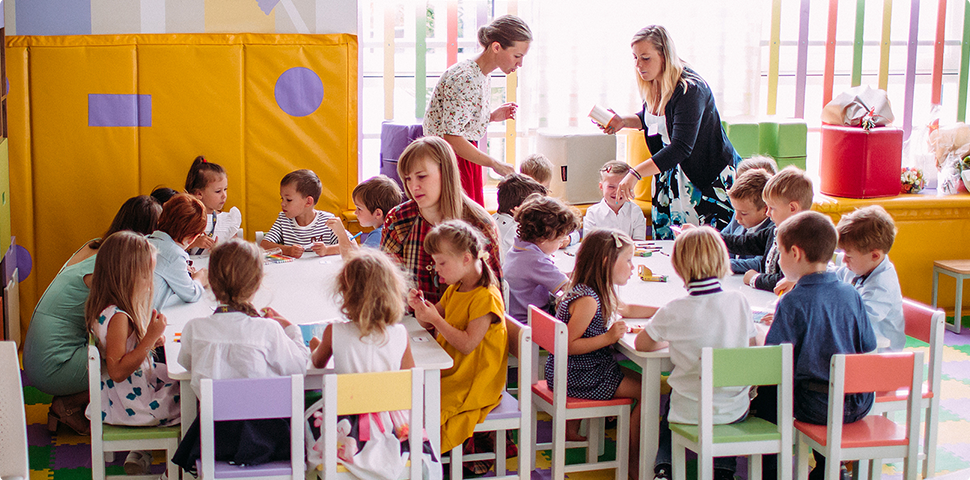Preschool program

How will my child benefit?
The 2-year Preschool Program can improve your child’s reading, writing, math and science skills and provide a strong foundation for future learning. It will make the transition to grade one easier for both you and your child.Your child will benefit from being able to socialise with other children and learn to develop appropriate social/emotional skills that are necessary for future success.
Who will support my child’s learning?
Two qualified teachers work together to help your child to learn during the school day. They implement a carefully planned program that is challenging and geared to each child’s level of development.
What will my child learn and do during a regular school day?
Your child will be involved in many different kinds of activities designed to help young learners explore, discover and grow. The teachers will be guided by a new curriculum document which is designed to reflect the Canadian Education System and skills required for 21st Century Learning.
How can I be involved?
Your involvement as a parent in your child’s learning is important at every stage of his or her education. Here are some simple ways you can help your child make the most of kindergarten:
throw an interest in your child’s learning by asking what your child learned at school today and make school an important part of family conversation.
attend information meetings and other events organised for parents and families.
speak to your child’s teacher or assistant if you have any questions or concerns about your child.
The Two Year Preschool Program
The program will emphasise six key learning areas: Personal and Social Development, Language, Math, Science and Technology, Health and Physical Activity and the Arts.
Personal and Social Development:
- Develop a positive attitude about themselves and others
- Become more independent and responsible
- Develop Self-regulation skills (awareness and regulation of their own behaviour)
- Develop appropriate social skills
- Solve problems and complete tasks
- Become more aware of their surroundings
Language:
- Talk, listen and participate in conversations with others
- Share ideas and ask questions
- Explore and develop strategies and skills for reading and writing
- View and respond to various media materials
Mathematics:
- Begin to understand math-related skills and concepts using hands-on concrete materials
- Understand numbers by counting, representing, matching, estimating and making sets
- Compare and Measure
- Describe, sort and compare shapes and three dimensional objects
- Describe the position of objects
- Recognise, describe and make patterns
- Sort and Classify
- Collect data to make concrete graphs
Science and Technology:
- Learn about the natural and man-made world through exploration and experimentation
- Observe, question and share information
- Conduct simple investigations
- Care for the environment
- Explore common materials
Health and Physical Activity:
- Participate in physical activities (indoors and outdoors)
- Participate in water activities/learning to swim
- Learn to make healthy choices
The Arts:
- Learn to express their ideas and feelings through music, visual arts, drama and dance
- Participate in dance classes
- Participate in art and pottery classes
- Participate in music classes
Examples of Activities in the Classroom
Exploration and Investigation
Children design small boats and bring them to the water centre. Each child puts their boats in the water and he/she places shells one by one on the boat. Another child keeps a tally of the number of shells that can be placed in a boat before sinking. The teacher or assistant asks the students which boat held the most shells before sinking and think about how it is different from the other boats.
Creative Thinking
A small group of children make several attempts to build a tower as tall as they are. Through trial and error, they discover that if they make the bottom wider they can build the tower higher. The children draw a picture of the finished product and label the pictures to show their solutions.
Observing and Learning
After making bird feeders from recycled materials, the children place them in the tree outside the classroom window. They observe and record the activity that takes place at each of the feeders. With support from the teacher or the assistant, and based on their own observations, some of the children make modifications to their feeders and place them back outside to observe the effect of the changes on the bird activity.


